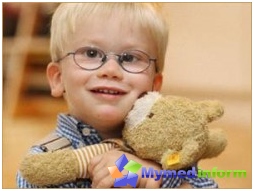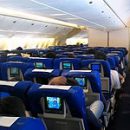The main problem is that glasses or contact lenses amblyopia does not fix - normal binocular vision is lost irretrievably. Fortunately, it is impossible to say that amblyopia tends to the widespread distribution among the inhabitants of the planet, since only 2% of people on Earth suffer from this disease. Healthy children face a disease in 1 - 3.5% of cases, and kids with existing pathologies of vision - in 4 - 5.5% of cases.
Causes of disease development

The leading ophthalmologists of the world agree that the main cause of ambulopia is the processes of braking in the cerebral cortex, which are excluded from a slim chain of the visual activity of the sick eye, and thus protect organs of vision from the development of two-called diplopia.
The appearance of primary amblyopia is associated with pathologies for the formation of the eyeball during the period of intrauterine development of the fetus.
To the risk factors for the emergence of secondary amblyopia include:
- Birth of a premature baby;
- Little baby weight at birth;
- The presence of retinopathy (affected retina) by the premature baby;
- cerebral palsy;
- mental delay;
- strabismus In a child up to 6 - 8 years old.
To indirect reasons for the development of amblyopia, the child includes harmful mother habits during pregnancy: smoking and drinking alcoholic beverages.
The risk of developing blindness in people suffering from amblyopy is significantly higher than those of people with good eyesight. If a healthy eye against the background of the secondary disease, the second loses the ability to binocular vision, a person becomes disabled.
Forms of pathology
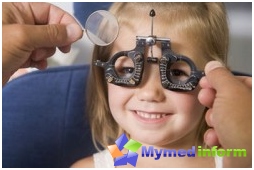
MirSoveto notes that not all diagnostic methods for the definition of amblyopia are listed above. The need for each of them is established on the basis of specific signs of one or another form of amblyopia. In some cases, they use computed tomography, MRI and send a patient to a consultation to a neurologist to eliminate various violations in the work of the central nervous system.
Treatment of ambiopia
If it does not give the problem in time, you can completely lose sight. Blindness acquired as a result of amblyopia, no correction. In general, the forecast for the treatment of amblyopia is favorable. From syndrome «Lazy eye» It is possible to completely get rid of, if it is responsible to approach the correction of the underlying disease that caused amblyopia.
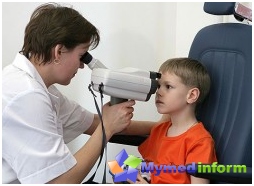
The treatment regimen is developing an ophthalmologist. To begin with, the specialist will try to choose the most appropriate correction, considering the patient's disease as an individual case. Senior school children can write contact or night lenses, assign laser correction, which is especially effective if both eyes have different refractures (anisometropy).
With the obscurable form of the disease, treatment is aimed at correction of a state that caused ambulopia. Thus, in ptosis, surgical plastic of the eyelids can be carried out, when the cornea is clouded with a photorefractive operation, Cataract - Implantation intraocular lenses.
Sturdymatic amblyopia is successfully adjusted by passive and active Pleoptics. Pleoptika is the sphere of ophthalmology, the subject of studying the pathology of the organs of vision as a result of their underdevelopment.
The basis of passive pleoptics lies occlusion (closure) of a well-wing eye to increase visual acuity at the kosying and variable occlusion to translate the squint in an alternating form. This species of the squint alternately fixes that one, then another eye, while the central fossa responds to «Picture», incoming then from one, then from another eye.
After applying the passive view, the pleoptics go to active form. To do this, cover a healthy eye, after which it is stimulated by the functioning of the retinal of the kosying eyeball. Stimulation is carried out with the help of light, laser, electrical pulses and specialized computer programs. To achieve tangible results, pleoptic vision correction is carried out from 3 to 5 times a year.
The leading role in the impact on the sore eye performs hardware treatment (ophthalmic simulators amblerocor, panorama, mosaic PS - 2).
For children of younger school age, which can not transfer occlusion, developed the method of penalization using atropine. The medicine is dripped in that eye that sees better, then due to the extended pupil of his vision acuity falls, which forces eye with amblyopia «work» at the limit of their capabilities.
The main procedures are complemented by physiotherapy sessions - vibrator massage and reflexology. The treatment of amblyopia can be called successful if the visual sharpness of both eyes gets approximately the same. The subject of stralasion is solved dramatically, eliminating pathology using the operation.
Prevention of the disease
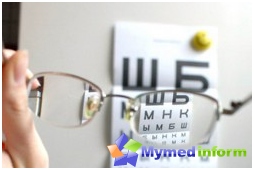
In order to detect a violation in the work of the visual apparatus, an ophthalmologist is visited at least 2 times a year. If the baby that has not reached 5 years of age, is even the most insignificant squint, he must have a regular.
Kids up to a year who have suspicion of squint, arrange workouts, placing toys at some distance ahead. In the lateral field of view, such kids should not be bright items!
Perhaps the most effective measure of the prevention of eye diseases there is an immediate appeal to the doctor with the slightest signs of any problems with eyes.



